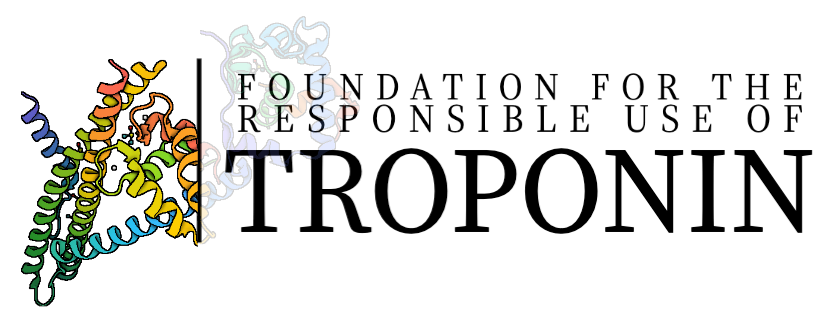The meaning of the term “myocardial infarction” (MI) varied widely until the World Health Organization first began to standardize heart disease nomenclature in the 1950s–1970s, largely using electrocardiogram (ECG)-based criteria [3]. Over the next several decades, joint task forces from the American College of Cardiology, American Heart Association, European Society of Cardiology, and World Heart Federation issued four successive iterations of the Universal Definition of Myocardial Infarction (UDMI) Consensus Document. As cardiac biomarker assays improved, the first UDMI in 2000 adopted the concept of using biomarkers such as serum troponin T and I (TnT/I) as a core component in the diagnosis of MI [4]. The second UDMI in 2007 introduced the five categories of MI and introduced the concept of troponin (Tn) rise and/or fall with at least one value above the 99th percentile upper reference limit (URL) [5]. The third UDMI in 2012 added criteria for the diagnosis of MI in the setting of left bundle branch block and paced rhythms and introduced an emphasis on incorporating imaging findings and the clinical presentation into the interpretation of Tn elevations [6]. The fourth and most recent UDMI published in 2018 issued updated definitions to accommodate the increased use of hs-Tn, discussed the implications of chronic elevations in Tn, and further clarified distinctions between the separate yet interrelated entities of myocardial injury, myocardial ischemia, and myocardial infarction [5].
The term “myocardial injury” applies to any patient with a conventional or hs-Tn value above the 99th percentile URL, regardless of the underlying cause (Figure 1) [5]. Myocardial injury can be further categorized as acute or chronic [8]. Acute myocardial injury is used to describe a dynamic rise or fall in conventional or hs-Tn values exceeding typical biological or analytical variation [9]. While a consensus on the specific threshold for acute injury remains elusive, it has been proposed that an increase greater than the reference change value be considered acute for TnT or TnI if the initial value is <99th percentile URL [9]. When the patient’s baseline Tn is >99th percentile URL, Tn increases ≥50% of the 99th percentile URL or changes >20% of the baseline Tn are considered acute (Figure 2) [10]. Chronic myocardial injury is characterized by persistently elevated Tn values > 99th percentile URL not meeting the above criteria [10]. There is enthusiasm for defining acute injury based on absolute “delta” changes in hs-Tn instead of the traditional 20% increase, but these delta thresholds are manufacturer-specific, and research is ongoing to define the optimal delta threshold in each setting of care [11,12]. There are many known etiologies of acute and chronic myocardial injury, including both intrinsic cardiac and non-cardiac conditions, to be discussed below.
It is crucial for clinicians to differentiate between nonischemic myocardial injury, which may be associated with conditions such as renal failure or sepsis, and myocardial injury in the setting of acute myocardial ischemia with or without atherosclerotic plaque disruption. Clinicians should avoid reflexively equating elevated Tn levels with myocardial infarction solely on the basis of an elevated biomarker. If ischemic ECG changes and/or symptoms are lacking, a diagnosis of “non-MI Tn elevation due to (an underlying cause)” would be more accurate. At times, there may be an overlap between myocardial ischemic and nonischemic conditions associated with increased Tn values. In these situations, it may be difficult to discriminate between the mechanisms of myocardial injury. It is important to document all possible contributors and their relative contributions. The terms “troponinemia”, “troponin leak”, “troponin bump”, and “troponinitis” should not be used in official documentation in the electronic medical record [13].
Myocardial ischemia is defined as a mismatch between myocardial oxygen supply and metabolic demand [14]. The clinical diagnosis of myocardial ischemia requires at least one of the following: clinical ischemic symptoms, new ischemic changes on ECG, new pathologic Q waves, a new loss of viable myocardium or wall motion abnormalities in an ischemic pattern, or angiographic or autopsy evidence of an acute coronary thrombus [5]. Classically, myocardial ischemia is the result of coronary luminal narrowing secondary to atherosclerosis [8]. Sufficiently high-grade stenosis in the absence of adequate collateralization can lead to ischemic physiology with exertion, often referred to as “chronic coronary artery disease (CAD)”, “chronic coronary syndrome”, “chronic coronary disease”, or “stable ischemic heart disease” (SIHD) [15,16]. SIHD classically presents as stable angina, although it can also manifest as chest pressure, jaw discomfort, arm discomfort, dyspnea, and epigastric discomfort [17]. There is also increasing recognition that processes such as epicardial coronary or microvascular dysfunction can also play a role in the development of myocardial ischemia, with or without concurrent obstructive atherosclerotic disease [18]. More rarely, ischemic damage can result from alternative pathologies, such as coronary dissection, arteritis, myocardial bridging, thromboembolism, or vasospasm [19].
Myocardial infarction (MI) is defined by the presence of both acute myocardial injury and evidence of myocardial ischemia [5]. Pathologically, MI is typically characterized by myocardial cell death, with necrosis progressing from the subendocardium to the subepicardium over the course of several hours [20]. Diagnosing MI requires careful consideration of findings from a patient’s history, physical exam, labs, ECG, and imaging.

For example, a patient with a drop in hemoglobin, normal Tn, and no anginal symptoms, ischemic ECG changes, or echo findings, has no myocardial injury.
A patient with a drop in hemoglobin, elevation in Tn, but no anginal symptoms, ischemic changes, or echo findings, has myocardial injury without myocardial ischemia.
Whereas a patient with a drop in hemoglobin, elevation in Tn, and either anginal symptoms, ischemic changes, or echo findings, has myocardial injury with myocardial ischemia, resulting in myocardial infarction.
Maayah M, Grubman S, Allen S, Ye Z, Park DY, Vemmou E, Gokhan I, Sun WW, Possick S, Kwan JM, et al. Clinical Interpretation of Serum Troponin in the Era of High-Sensitivity Testing. Diagnostics. 2024; 14(5):503. https://doi.org/10.3390/diagnostics14050503

